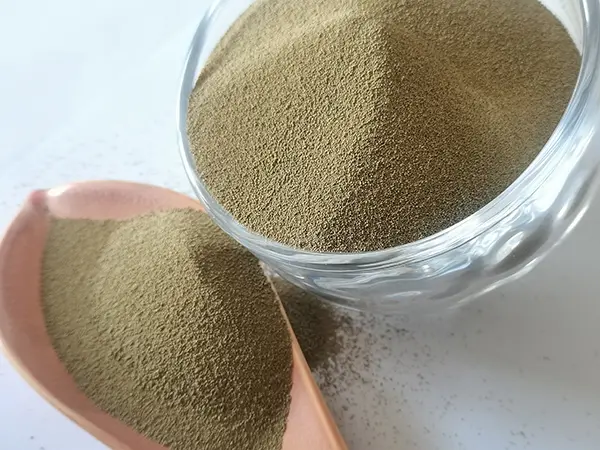The Versatility and Benefits of Ceramsite
Ceramsite, a lightweight ceramic aggregate, has gained significant attention in the construction and landscaping industries thanks to its unique properties and versatility. Made from clay, shale, or other natural materials that are heated and fired at high temperatures, ceramsite offers an innovative solution for various applications. This article aims to explore the characteristics, uses, advantages, and environmental impacts of ceramsite.
Characteristics of Ceramsite
Ceramsite possesses several notable characteristics that make it an attractive option for various applications. Its lightweight nature, due to the porous structure formed during the manufacturing process, significantly reduces the overall weight of construction materials. This property not only eases transportation but also lessens the load on structural systems. Additionally, ceramsite is highly durable, having excellent resistance to weather conditions, chemical attack, and environmental factors. Its porous texture allows it to maintain a lower density, which enhances its insulation capabilities, making it an excellent thermal and acoustic insulator.
Uses of Ceramsite
Ceramsite is employed in multiple sectors, illustrating its versatility. A primary application is in the production of lightweight concrete. The incorporation of ceramsite aggregates results in a reduced density of concrete, making it ideal for high-rise buildings where minimizing weight is crucial. Moreover, these lightweight concrete blocks provide enhanced thermal insulation properties, thus contributing to energy efficiency in buildings.
In addition to construction, ceramsite is utilized in hydraulic engineering and landscaping
. Its use in artificial lake beds, drainage systems, and garden landscaping has helped in managing water retention while maintaining excellent drainage performance. The porous nature of ceramsite allows water to permeate easily, which creates an environment conducive to plant growth while preventing waterlogging.Another intriguing application of ceramsite is in wastewater treatment systems. It serves as a filter medium in biofiltration systems, aiding in the effective removal of pollutants from wastewater. The porous structure of ceramsite provides a large surface area for microbial growth, thereby enhancing the biological treatment process and ensuring cleaner effluent.
ceramsite

Advantages of Ceramsite
The advantages of ceramsite extend across environmental, economic, and performance aspects. Environmentally, the use of ceramsite contributes to sustainability. As it is manufactured from abundant natural materials, the resource consumption remains relatively low compared to traditional construction materials. Moreover, ceramsite can be recycled and repurposed, minimizing waste and promoting circular economy principles.
From an economic standpoint, utilizing ceramsite can lead to cost savings over the lifespan of a project. Since ceramsite aggregates reduce the weight of structures, they can cut down on transportation costs and lower foundational requirements due to reduced load, ultimately saving money in construction. Additionally, the energy efficiency provided by ceramsite in insulation translates to lower energy bills for building occupants.
Performance-wise, the inherent properties of ceramsite contribute to the longevity and durability of structures. The resistance to extreme weather, chemicals, and erosion ensures that the lifespan of products made with ceramsite is significantly enhanced, reducing maintenance costs and extending the time between renovations or replacements.
Environmental Impact
The production and use of ceramsite can lead to a reduced carbon footprint in construction projects. The lightweight properties decrease the need for heavy machinery during construction and lessen transportation emissions. Furthermore, the insulation capabilities of ceramsite reduce energy consumption for heating and cooling purposes, making it an ally in the fight against climate change.
In conclusion, ceramsite plays a crucial role in modern construction and landscaping through its lightweight, durable, and versatile nature. Its diverse applications, combined with numerous advantages—environmental, economic, and performance-related—make ceramsite an essential material for a sustainable future. As industries continue to seek innovative solutions to reduce their environmental impact while enhancing the efficiency and performance of structures, ceramsite stands out as a valuable contributor to these goals. The continued exploration and application of ceramsite in various fields may lead to even more groundbreaking uses and benefits in this ever-evolving industry.
Post time:Dek . 23, 2024 07:11
Next:sanding glazed ceramics
